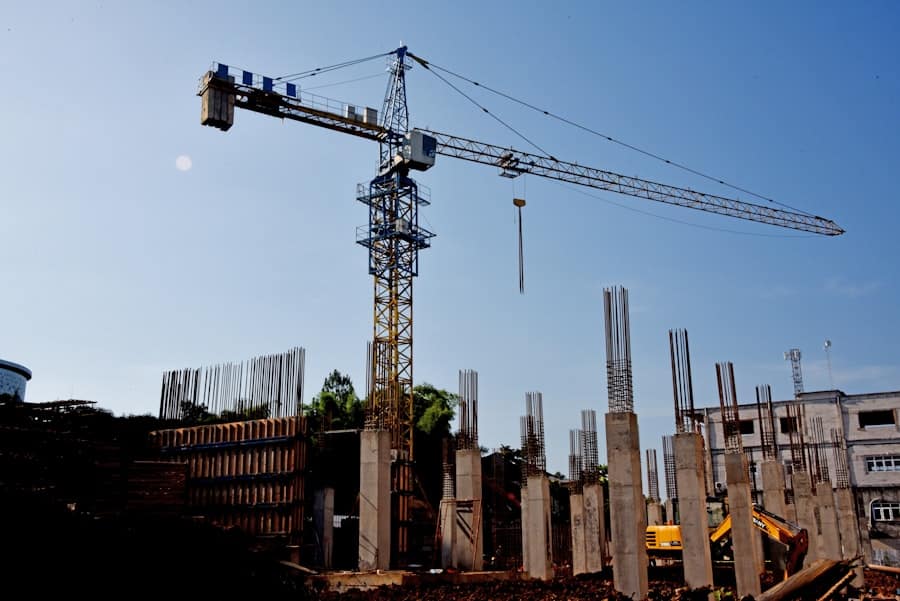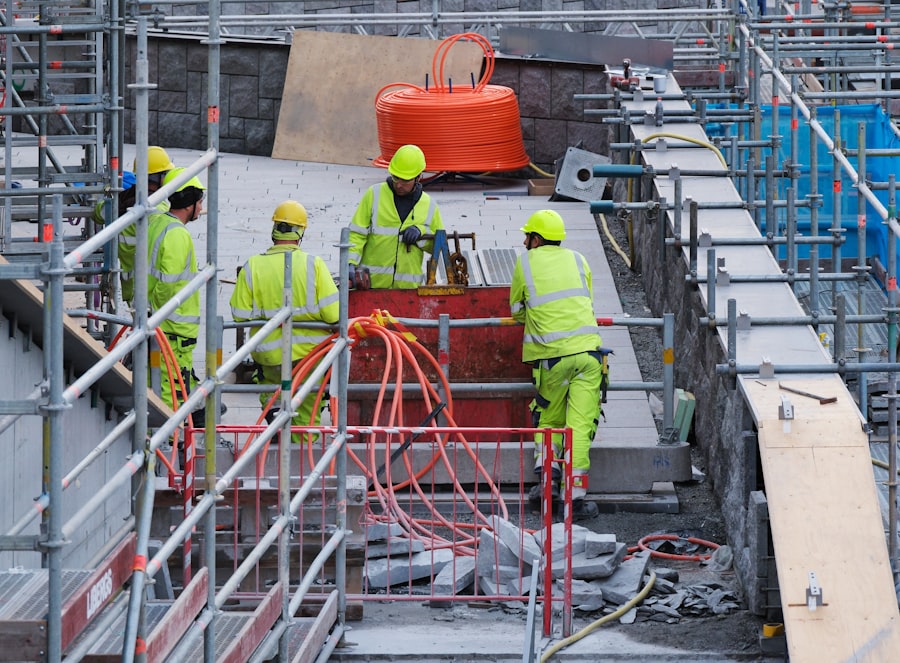As you prepare for the inspection and walkthrough of your property, it’s essential to gather all necessary materials and information. Start by collecting any previous inspection reports, maintenance records, and photographs that document the current state of your landscape. This background information will provide valuable context during the walkthrough, allowing you to identify changes or improvements that may have occurred since the last assessment.
Additionally, consider creating a checklist of specific areas you want to focus on during the inspection. This will help ensure that no detail is overlooked and that you can address any concerns effectively. Before the actual walkthrough begins, it’s also wise to familiarize yourself with the various elements of your landscape.
Take some time to research common landscaping issues and best practices for maintenance. Understanding what to look for will empower you during the inspection, enabling you to ask informed questions and make educated decisions about any necessary repairs or enhancements. By being well-prepared, you set the stage for a productive inspection that can lead to a healthier and more aesthetically pleasing outdoor space.
Key Takeaways
- Prepare for the inspection by gathering necessary tools and equipment
- Check the exterior of the property for any signs of damage or wear
- Assess the condition of the landscape, including the health of the grass, plants, and soil
- Evaluate the hardscape elements such as pathways, driveways, and patios for any issues
- Examine the irrigation system to ensure proper functioning and coverage of the landscape area
Checking the Exterior of the Property
Examine the Exterior Structure
Start by examining the exterior of your property, including the walls, roof, pathways, driveways, and fences. Look for signs of wear and tear, such as cracks in the foundation or peeling paint, which could indicate underlying issues that need to be addressed.
Assess the Exterior’s Impact on Landscaping
Pay attention to how well the exterior complements your landscape; a well-maintained exterior can enhance the overall appeal of your property. Take note of any areas where water may accumulate or drain improperly, as poor drainage can lead to significant problems over time, including erosion and damage to both hardscape and plantings.
Addressing Concerns Early On
If you notice any issues, consider discussing potential solutions with your landscaping professional during the walkthrough. By addressing these concerns early on, you can prevent more extensive damage and maintain the integrity of your property.
Assessing the Condition of the Landscape

Next, turn your attention to the overall condition of your landscape. This involves evaluating not just the aesthetic appeal but also the health of your plants and soil. Begin by observing the color and vitality of your grass, shrubs, and flowers.
Healthy plants should exhibit vibrant colors and robust growth, while any signs of wilting or discoloration may indicate underlying issues such as pests or nutrient deficiencies. In addition to visual assessments, consider conducting a soil test if you suspect that your plants are not thriving as they should. Soil quality plays a crucial role in plant health, and understanding its composition can help you make informed decisions about fertilization and amendments.
During this part of the inspection, don’t hesitate to ask your landscaping professional for advice on improving soil health or enhancing plant vitality. Their expertise can provide valuable insights that will benefit your landscape in the long run.
Evaluating the Hardscape Elements
Hardscape elements are integral to your landscape design, providing structure and functionality. As you evaluate these components, take a close look at patios, walkways, retaining walls, and any other non-plant features present on your property. Check for signs of wear, such as cracks in pavers or uneven surfaces that could pose safety hazards.
Addressing these issues promptly can prevent further deterioration and ensure that your hardscape remains both beautiful and functional. Consider how well these hardscape elements integrate with your overall landscape design. Are they visually appealing?
Do they complement the natural features of your property? If you find that certain elements are outdated or do not align with your vision for your outdoor space, discuss potential upgrades or renovations with your landscaping professional. Enhancing hardscape features can significantly elevate the overall aesthetic of your property while also improving usability.
Examining the Irrigation System
An efficient irrigation system is vital for maintaining a healthy landscape. During your inspection, take time to examine this system thoroughly. Start by checking for leaks or broken components that could lead to water waste or inadequate coverage for your plants.
Ensure that sprinkler heads are functioning correctly and distributing water evenly across all areas of your landscape. Additionally, consider whether your current irrigation system meets the needs of your plants throughout different seasons. As weather patterns change, so too do watering requirements.
If you find that your system is outdated or inefficient, discuss options for upgrades or adjustments with your landscaping professional. Implementing a more effective irrigation strategy can save water and promote healthier plant growth.
Inspecting the Plantings and Trees

Assessing Plant Condition
Begin by evaluating each plant’s condition individually, looking for signs of disease or pest infestations. Check leaves for discoloration or spots that may indicate fungal infections or insect damage.
Examining Root Systems and Tree Structure
Additionally, examine the root systems if possible; healthy roots should be firm and well-established in the soil. When inspecting trees, pay attention to their overall structure and stability. Look for any signs of leaning or damage to branches that could pose safety risks during storms or high winds.
Maintaining Tree Health and Safety
If you notice any issues with your trees, consult with an arborist or landscaping professional during your walkthrough to determine appropriate care measures or potential removals. Ensuring that your trees are healthy not only enhances the beauty of your landscape but also contributes to its overall safety.
Verifying the Functionality of Outdoor Lighting
Outdoor lighting plays a crucial role in enhancing both safety and aesthetics in your landscape. As part of your inspection, verify that all lighting fixtures are functioning correctly. Check each light source for burned-out bulbs or damaged wiring that may need repair or replacement.
Properly illuminated pathways and entry points are essential for preventing accidents and creating an inviting atmosphere. Consider how well your outdoor lighting complements the overall design of your landscape. Are there areas that could benefit from additional lighting?
Perhaps certain features like trees or sculptures could be highlighted to create a more dramatic effect at night. Discussing these possibilities with your landscaping professional can lead to creative solutions that enhance both safety and visual appeal in your outdoor space.
Identifying Any Issues or Deficiencies
Throughout your inspection, it’s essential to remain vigilant in identifying any issues or deficiencies within your landscape. This could range from minor cosmetic concerns to significant structural problems that require immediate attention. Take detailed notes on any findings so that you can address them systematically during discussions with your landscaping professional.
Once you’ve compiled a list of issues, prioritize them based on urgency and impact on your landscape’s health and aesthetics. Some problems may require immediate action, while others can be scheduled for future maintenance sessions. By being proactive in addressing these concerns, you can ensure that your landscape remains vibrant and well-maintained over time.
Discussing Maintenance and Care Instructions
After identifying any issues during the inspection, it’s crucial to discuss maintenance and care instructions with your landscaping professional. They can provide tailored advice based on the specific needs of your plants, hardscape elements, and irrigation system. Understanding proper care techniques will empower you to maintain a healthy landscape long after the inspection is complete.
Consider asking about seasonal maintenance tasks that may be necessary throughout the year. This could include pruning schedules for trees and shrubs, fertilization recommendations, or strategies for pest control. By being informed about ongoing care requirements, you can take an active role in preserving the beauty and health of your outdoor space.
Addressing Client Concerns and Questions
As you wrap up the inspection process, take time to address any concerns or questions you may have regarding your landscape. Open communication with your landscaping professional is vital; they are there to help you understand every aspect of what was discussed during the walkthrough. Whether it’s about specific plant care techniques or potential upgrades to hardscape features, don’t hesitate to seek clarification on anything that remains unclear.
Additionally, if there are particular goals you have for your landscape—such as creating a more sustainable environment or enhancing curb appeal—share these aspirations with your professional team. They can offer insights into how best to achieve these objectives while ensuring that all aspects of care are considered.
Finalizing the Inspection and Walkthrough with Landscaping Services
As you conclude the inspection and walkthrough process, take a moment to review all findings with your landscaping professional one last time. Ensure that all identified issues have been documented clearly and that there is a mutual understanding of next steps moving forward. This final review is an opportunity to solidify plans for any necessary repairs or enhancements while also confirming timelines for future maintenance.
Once everything is finalized, express gratitude for their expertise and assistance throughout this process. A well-conducted inspection not only helps maintain the health of your landscape but also fosters a collaborative relationship with those who care for it. By taking these steps seriously, you set yourself up for success in achieving a beautiful and thriving outdoor space that you can enjoy for years to come.
When completing a post-construction inspection and walkthrough with landscaping services, it is crucial to ensure that all aspects of the project are thoroughly examined. One related article that provides valuable insights into residential landscaping services can be found at thelandscapingservice.com/residential-landscaping/. This article discusses the importance of proper maintenance and care for your landscaping to ensure its longevity and beauty. By following the tips and guidelines outlined in this article, homeowners can effectively maintain their landscaping investment and enjoy a beautiful outdoor space for years to come.
FAQs
What is a post-construction inspection and walkthrough with landscaping services?
A post-construction inspection and walkthrough with landscaping services is a process that occurs after the construction of a property is completed. It involves a thorough inspection of the property to ensure that all construction work has been completed according to the agreed-upon plans and specifications, and that the landscaping has been installed correctly.
What are the steps involved in a post-construction inspection and walkthrough with landscaping services?
The steps involved in a post-construction inspection and walkthrough with landscaping services typically include:
1. Reviewing the construction plans and specifications to ensure that all work has been completed as per the agreed-upon design.
2. Inspecting the exterior of the property, including the landscaping, to ensure that it has been installed correctly and meets the desired aesthetic and functional requirements.
3. Checking for any defects or issues with the construction or landscaping that need to be addressed before the property can be considered complete.
4. Conducting a walkthrough with the client to review the completed work and address any concerns or questions they may have.
5. Creating a punch list of any remaining tasks or issues that need to be resolved before the project can be considered finished.
Why is a post-construction inspection and walkthrough with landscaping services important?
A post-construction inspection and walkthrough with landscaping services is important because it ensures that the property has been completed to the agreed-upon standards and specifications. It also provides an opportunity for the client to review the work and address any concerns before the project is considered finished. Additionally, it helps to identify any remaining tasks or issues that need to be resolved before the property can be handed over to the client.
